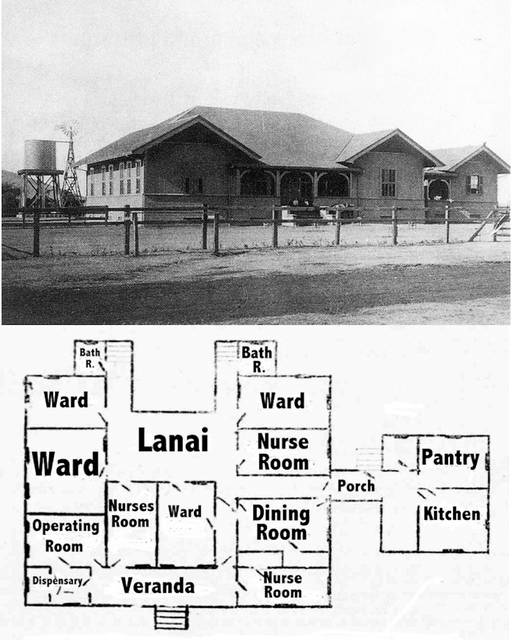The Honolulu Waterfront Development Project, introduced by Governor Lucius E Pinkham and the Board of Harbor Commissioners in 1916, was declared to be the “most important project ever handled in Honolulu Harbor.”
The project began in 1916 with the construction of new docks; it continued in 1924 with the construction of Aloha Tower as a gateway landmark heralding ship arrivals.
On September 3, 1930, the Territory of Hawaiʻi entered into an agreement with Hélène Irwin Fagan and Honolulu Construction and Draying, Ltd. (HC&D), whereby HC&D sold some property to Fagan, who then donated it to the Territory with the stipulation that the property honor her father and that it be maintained as a “public park to beautify the entrance to Honolulu Harbor.”
The Territory of Hawai‘i agreed to accept the donation from Hélène Irwin Fagan. The deed restrictions and conditions stated that if any portion of the Property was ever abandoned as a public park, the Property would revert back to Fagan and “her heirs and assigns”.
On March 13, 1931, through Executive Order No. 472, the Territory set aside the Property as a public park and noted that the Territory owned the Property subject to the restrictions and conditions set forth in the deed from Fagan to the Territory.
The Honolulu Waterfront Development Project was completed in 1934 with the creation of a 2-acre oasis shaded by the canopies of monkeypod trees; Irwin Memorial Park is located mauka of the Aloha Tower Marketplace bounded by North Nimitz Highway, Fort Street, Bishop Street and Aloha Tower Drive.
In 1939, the Territory and Fagan entered into a Supplemental Agreement “to permit the parking of vehicles of whatsoever nature, whether with or without the payment of a fee or fees on that portion of (Irwin Park) now set aside for the parking of vehicles”. A later (1951,) agreement allowed for widening of Nimitz Highway. (Hawaii ICA)
In 1981, the Legislature enacted Hawai‘i Revised Statutes (HRS) Chapter 206J, which created Aloha Tower Development Corporation (ATDC) as an agency of the State, and which provides that “Irwin Memorial Park shall be retained as a public park subject to the reservations and conditions set forth in the deed”. In 1999, Irwin Park was placed on the Hawai‘i Register of Historic Places. (Hawaii ICA)
William G Irwin was born in England in 1843; he was the son of James and Mary Irwin. His father, a paymaster in the ordnance department of the British army, sailed with his family for California with a cargo of merchandise immediately after the discovery of gold in 1849. The family then came to Hawaiʻi.
Irwin attended Punahou School and as a young man was employed at different times by Aldrich, Walker & Co.; Lewers & Dickson; and Walker, Allen & Co.
In 1880, he and Claus Spreckels formed the firm WG Irwin & Co; for many years it was the leading sugar agency in the kingdom and the one originally used by the West Maui Sugar Association.
In 1884, the firm took over as agent for Olowalu Company. William G Irwin and Company acted as a sales agent for Olowalu’s sugar crop as previous agents had done. It also was purchasing agent for plantation equipment and supplies and represented Olowalu with the Hawaiian Board of Immigration to bring in immigrant laborers.
In 1885, Irwin and Spreckels opened the bank of Claus Spreckels & Co., later incorporated under the name of Bank of Honolulu, Ltd., that later merged with the Bank of Bishop & Co.
In 1886, Mr. Irwin married Mrs. Fannie Holladay. Their only child, Hélène Irwin, was married to industrialist Paul Fagan of San Francisco.
A close friend of King Kalākaua, Irwin was decorated by the King and was a member of the Privy Council of Hawaiʻi in 1887.
In 1896, the Legislature of the Republic of Hawaiʻi put Kapiʻolani Park and its management under the Honolulu Park Commission; William G Irwin was the first chair of the commission.
In 1901 he was made a Chevalier of the Legion of Honor by the French government in recognition of his services as Hawaiʻi’s representative to the Paris Exposition.
By 1909, William G Irwin and Company’s fortunes had declined and, reaching retirement age, Irwin reluctantly decided to close the business. In January 1910, the firm of William G. Irwin and Company merged with its former rival C. Brewer and Company.
Irwin moved to San Francisco in 1909 and served as president and chairman of the board of the Mercantile Trust Company, which eventually merged with Wells Fargo Bank.
In 1913, Mr. Irwin incorporated his estate in San Francisco under the name of the William G. Irwin Estate Co., which maintained large holdings in Hawaiian plantations. He had extensive business interests in California, as well as in Hawaiʻi, and was actively associated with the Mercantile National Bank of San Francisco in later years.
William G Irwin died in San Francisco, January 28, 1914.
Irwin had a CW Dickey-designed home makai of Kapiʻolani Park. In 1921, the Territorial Legislature authorized the issuance of bonds for the construction, on the former Irwin property, of a memorial dedicated to the men and women of Hawaiʻi who served in World War I. It’s where the Waikīkī Natatorium War Memorial now sits.

















































